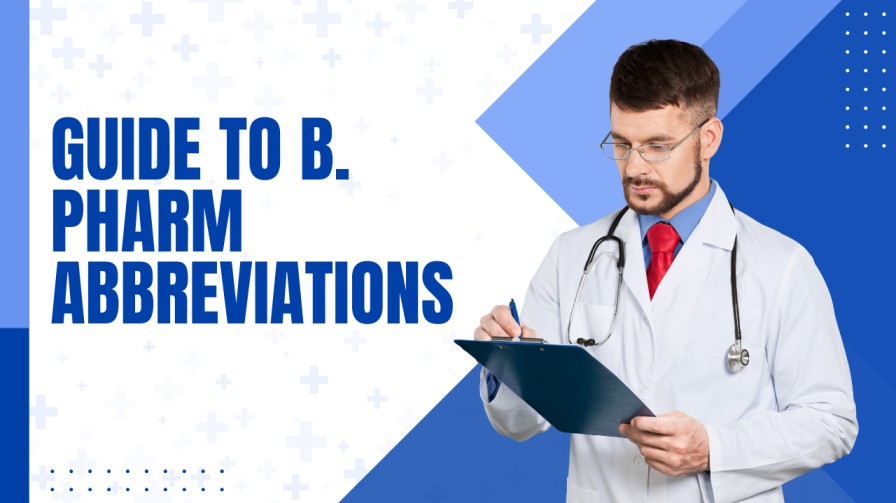Abbreviations in Pharmacy
Abbreviations are commonly used in pharmacy to save time and space. However, it’s crucial to understand these abbreviations to avoid errors and ensure patient safety.
Why Abbreviations Are Used
- Efficiency: Abbreviations allow for concise and efficient communication.
- Standardization: They provide a common language for healthcare professionals.
The Importance of Correct Interpretation
Misinterpreting abbreviations can lead to serious medication errors. It’s essential to learn and use abbreviations correctly.
Common Abbreviations in Prescription Writing
Here are some common abbreviations used in prescription writing:
Abbreviations for Frequency
| ac | Before meals |
| pc | After meals |
| bid | Twice a day |
| tid | Three times a day |
| qid | Four times a day |
| qod | Every other day |
| hs | At bedtime |
| prn | As needed |
Abbreviations for Dosage Forms
| tab | Tablet |
| cap | Capsules |
| soln | Solution |
| susp | Suspension |
| elix | Elixir |
| oint | Ointment |
| supp | Suppository |
| inhal | Inhalor |
Abbreviations for Routes of Administration
| po | By Mouth |
| IV | Intravenous |
| IM | Intramuscular |
| SC | Subcutaneous |
| SL | Sublingual |
| top | Topical |
| ophth | Ophthalmic |
| otic | Otic |
| vag | Vaginal |
| rect | Rectal |
Abbreviations in Pharmaceutical Calculations
| mcg | Microgram |
| mg | Milligram |
| g | Gram |
| mL | Milliliter |
| L | Liter |
| % | Percentage |
Abbreviations in the Pharmaceutical Industry
Regulatory Agencies
| FDA | Food and Drug Administration |
| WHO | World Health Organization |
| DCGI | Drug Controller General of India |
| CDSCO | Central Drugs Standard Control Organization |
Quality Assurance and Quality Control
| QA | Quality Assurance |
| QC | Quality Control |
| GMP | Good Manufacturing Practice |
| GLP | Good Laboratory Practice |
| GDP | Good Distribution Practice |
Clinical Trials
| RCT | Randomized Controlled Trial |
| IRB | Institutional Review Board |
| GCP | Good Clinical Practice |
Abbreviations in Medical Reports and Records
| BP | Blood Pressure |
| HR | Heart Rate |
| RR | Respiratory Rate |
| T | Temperature |
| WBC | White Blood Cell Count |
| RBC | Red Blood Cell Count |
| Hb | Hemoglobin |
| Hct | Hematocrit |
| ESR | Erythrocyte Sedimentation Rate |
Tips for Understanding and Using Abbreviations
- Consult a Reference Book: Refer to a pharmacology textbook or a drug information resource to clarify any unfamiliar abbreviations.
- Use a Medical Dictionary or Terminology Guide: These resources provide definitions and explanations of medical terms and abbreviations.
- Ask Your Professor or Pharmacist: Don’t hesitate to ask your instructor or pharmacist if you have any questions about abbreviations.
Conclusion
Understanding pharmaceutical abbreviations is essential for effective communication and accurate medication administration. By familiarizing yourself with common abbreviations and their meanings, you can enhance your understanding of medical terminology and improve patient safety.
FAQs
1. What are some common abbreviations used in prescription writing?
Some common abbreviations include ac (before meals), pc (after meals), bid (twice a day), tid (three times a day), and qid (four times a day).
2. Why is it important to use abbreviations correctly?
Incorrect use of abbreviations can lead to medication errors, which can have serious consequences for patient safety.
3. How can I improve my understanding of pharmaceutical abbreviations?
Practice using abbreviations in your studies, consult reference books, and ask your professors or pharmacists for clarification.
4. Are there any standardized guidelines for using abbreviations?
Yes, organizations like the World Health Organization (WHO) have published guidelines for the safe use of abbreviations in healthcare.
5. What are some tips for remembering pharmaceutical abbreviations?
Create flashcards, practice using them in context, and use mnemonic devices to help you remember.

